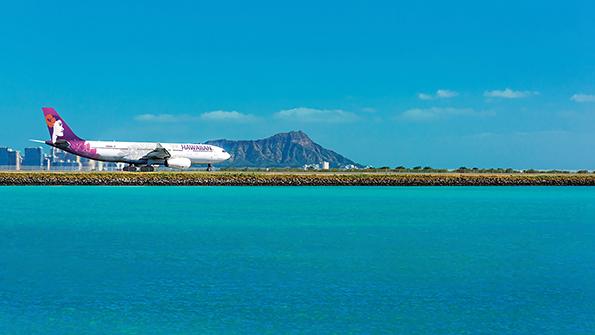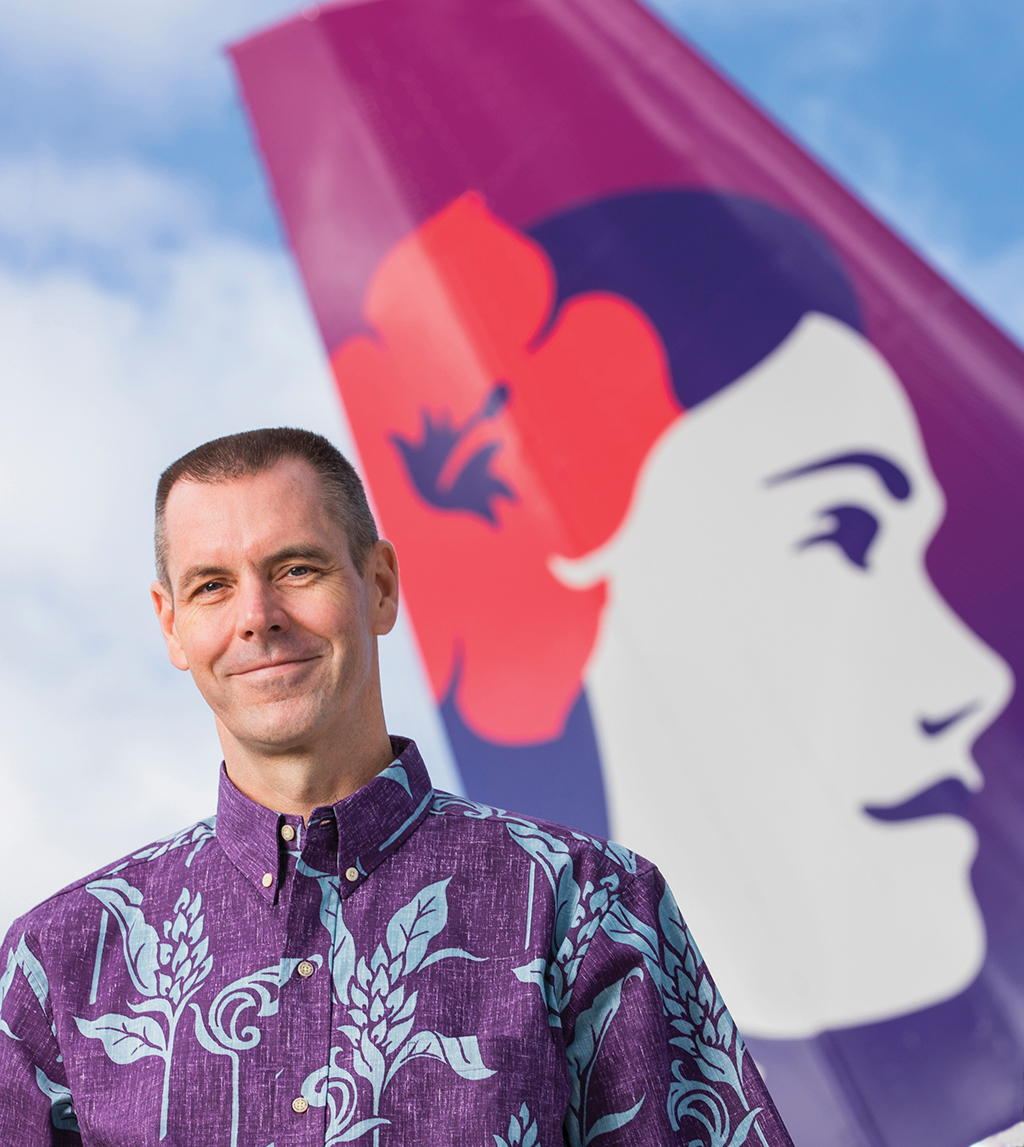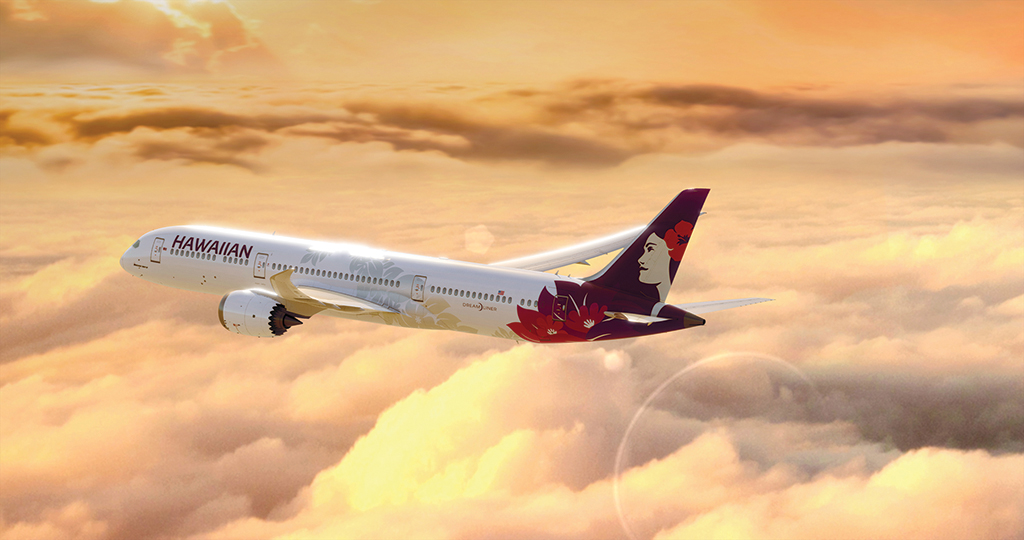
Hawaiian Airlines’ post-pandemic story has had more twists and turns than Hawaii’s Hana Highway. The carrier reported a pre-tax loss of $12.3 million for the 2023 second quarter, while most of its US mainland competitors saw double-digit earnings. And though Hawaiian’s losses narrowed year-over-year, profitability has eluded the airline, which last reported a quarterly operating profit back in the 2020 first quarter.
The 94-year-old carrier, which relies nearly entirely on its namesake archipelago for traffic, was disproportionally and uniquely affected by the pandemic when Hawaii shut down to tourists from March 2020 to November 2021.
Hawaiian’s challenges mounted at the end of the tourism season in early August as the deadliest wildfires in the US in 100 years raged on Maui, Hawaiian’s second-largest hub. By mid-August, most of the island’s resorts and tourists were evacuated, with the historic town of Lahaina destroyed. All nonessential travel to Maui was strongly discouraged by local authorities and in statements by Hawaiian. At press time, it was too early to assess the extent of the impact on Hawaiian, but as the only US carrier to be based on the island, it will clearly be the most affected.
TD Cowen analyst Helane Becker wrote on Aug. 11 that she did not have an estimate to share on the impact, but expected it to be “meaningful” for Hawaiian.
“We expect capacity to shift away from Maui as a destination and to Oahu, the Big Island. Kauai may also benefit. There are no changes in our ratings at this time, especially as [Hawaiian] is a Market Perform rated stock,” she wrote.
Hawaiian CEO Peter Ingram, in an interview with ATW that took place before the wildfires broke out, pointed to “two particular factors that have affected the pace of our return to profitability differently than the other US carriers.” These are Japan and Southwest Airlines. Hawaiian has seen a drop in the number of Japanese tourists and an increasingly aggressive bite into its US market share from Southwest.
The Japanese, a mainstay of Hawaii’s tourism industry, once accounted for 15% of the island’s visitors and between “15%-20% of our pre-pandemic revenue,” Ingram said. He cited the Japanese people’s “cautiousness toward international travel” and the depreciating yen to the US dollar value by 25%-30% since 2018 as the main culprits, although Japanese carrier ANA, in particular, has focused on the Hawaiian market with special livery and cabin-equipped Airbus A380s that promise a Hawaiian experience from boarding, something that used to be unique to Hawaiian’s branding.
Nevertheless, Becker notes that Hawaiian’s “load factors and fares are strong” and that the airline retains its traditional slight lead in capacity at 34% over ANA and Japan Airlines, with United Airlines exiting the Hawaii-Tokyo market. Japanese LCC Zipair has joined the fray since 2019, OAG data confirms. Fortunately, Hawaiian’s Oceania routes to Australia, Tahiti and New Zealand have recovered much quicker.
Since the demise of Aloha Airlines in 2008, Southwest has been eating into Hawaiian’s 15-year near-exclusive interisland franchise since 2019.
“Competition from Southwest Airlines in the interisland markets remains intense,” Becker said. OAG data shows Hawaiian’s interisland ASM share in August 2022 dropped to 63%, followed by Southwest at 33.5%, from 87% and 10%, respectively, in August 2019.
“Hawaiian dropped its neighbor island fares to as low as $39 one-way, which impacts everyone’s profitability,” Becker said. A spot-check of one-way weekday fares between the main artery route connecting Honolulu and Kahului on Maui in August revealed a range of $44 to $104 on Southwest versus Hawaiian’s $87 to $137 tariff. Though pressure from Southwest’s slightly moderating fares is easing, Ingram calls them out as “unsustainable” and reminiscent of the price dumping by short-lived competitor Mesa Airlines’ Go! back in the early 2000s.
“There’s just no way that anyone can be profitable flying from here to Maui for less than it costs to take an Uber to the airport,” Ingram said. “It’s not $39 to the carrier; it’s a little over $26 after you send the taxes to the federal government. Even $49 to $59 isn’t enough to cover the total cost of operations.”
Pre-pandemic, this franchise accounted for 20% of the carrier’s revenue. “That part of our business is, from a profitability perspective, not close to fully recovered; from a traffic perspective, it’s recovered well,” Ingram said.

During the second-quarter earnings call, the airline cited US Department of Transportation (DOT) statistics giving it a 2.5% unit revenue and 32% load factor advantage over Southwest, crediting “superior service,” a local loyalty value proposition—particularly when connecting with the mainland—and a deeper schedule. For example, Hawaiian operated a high-frequency shuttle between Honolulu and Kahului, Maui, during a typical August weekday with 22 daily rotations versus Southwest’s 11 roundtrips. No single airline schedules this level of frequency on a single route in the world.
Though hardly retreating, Southwest suggested during its earnings call that it was reducing some frequency in the interisland market because of a seasonal and network realignment. Hawaiian is guiding toward improving passenger revenue per available seat mile in the 2023 second half.
Though interisland local Hawaii traffic is still crucial to modality, it’s not what it once was, analyst Bob Mann noted.
“Interisland carriers, Hawaiian included, operated for decades connecting widebody interline visitor arrivals at Honolulu with their typical demand for multiple neighbor islands,” Mann said.
Over the years, point-to-point mainland nonstops directly to the neighbor islands have led increasingly to overflying Honolulu, though the Hawaiian Tourist board notes that many visitors often visit multiple islands. Competitive attempts via sea, like high-speed ferries, have failed.
Late Again
Hawaiian toppled from its pinnacle as America’s most punctual airline for 18 years running in 2021, primarily because of the eight-month-long reconstruction of Honolulu Daniel K. Inouye International Airport’s runway 8L, where Hawaiian’s hub has a 42% market share. The closure of one of four primary runways had an especially punitive performance on the outsized neighbor island traffic. The most recent DOT statistics, for April 2023, showed Hawaiian languishing in last place with just 56% of flights arriving on time.
“Our frontline teams felt justifiably that they couldn’t be successful in that environment for about eight months from October to May,” Ingram said. “It hurts us deeply when we can’t take care of our guests the way we want to take care of them.”
The runway reopened on May 27. Ingram says Hawaiian’s on-time performance climbed in June to around 80%, though “by our historical standards of being in the high 80s or low 90s, month after month is not where we want to be.” July was “trending a few points better,” he said.
Another factor out of Hawaiian’s control that’s taken its toll on the airline’s balance sheet is escalating costs at Hawaii’s airports—partially related to capital projects—which were already charging higher-than-industry rates. Further drags include labor and supply chain costs, particularly the Air Line Pilots Association’s new collective bargaining agreement with an average of a 32% pay increase ratified last March, which will have a “one to two” point negative effect on Hawaiian’s CASM—headwinds familiar to the industry and not unique to Hawaiian.
Hawaii is an aspirational dream destination whose allure is legendary. After a “revenge travel” year in 2022, Hawaii’s total number of visitors fell by 6% in June, though average spending and days spent on the islands increased, according to the Hawaii Tourism Authority.
On the plus side, competitor capacity has decreased slightly as airlines deploy aircraft elsewhere. Hawaiian’s mainland load factors this summer have hovered “between 88% and 92%,” Ingram said.
The company is confronting these challenges head-on. Initiatives include a transition to improved work rules and tools for frontline staff to drive productivity and bring more Airbus A330 maintenance in-house. Hawaiian completed migrating to its new passenger service system platform, Amadeus Altera, in May, which is stimulating its New Distribution Capability (NDC) retailing capabilities on top of other passenger experience amenities, like free inflight Wi-Fi from Starlink, that allow it to further de-commoditize and differentiate its product.
“I give Hawaiian much credit for some of their distribution strategy work. For example, they’ve taken some of their cheapest fares out of the global distribution systems used by travel agencies,” analyst Henry Harteveldt said.
Flying between Hawaii and the US mainland constitutes roughly 45% of Hawaiian’s revenue. In the face of competition on those routes against seven carriers, Hawaiian is holding its own and is virtually tied with United at 23%. Southwest has leap-frogged Alaska Airlines for the number three position. But Hawaiian’s higher perceived level of service has allowed it to yield up.
“Your Hawaiian experience begins as soon as you get on the plane with us,” Ingram said, turning this into an advantage. “We’ve got to do something different, otherwise we are just a commodity provider with little room to be successful with 1% or 2% of the industry [US market share].”
Ingram believes that experience differentiation allows the airline to achieve a yield premium along with a strict revenue management focus, “if we’re able to attract a higher amount of demand and we can close off some inventory buckets a little sooner and earn a higher level of revenue on remaining seats.”
A spot check of pricing in August shows Hawaiian achieving premium pricing across economy, premium economy and first class, particularly in the front cabin.
Ingram said there were few, if any, lie-flat seat cabin products flying to Hawaii in 2016, and few examples of similarly geographical leisure spots. The product on Hawaiian’s A330-200s exceeded customer expectations, not only on the longer-haul New York and Boston routings but also in closer west coast markets. This premium-heavy differentiator is being carried forward to Hawaiian’s 12 Boeing 787-9s that are expected to begin arriving in early 2024 and that will have 34 Leihōkū branded suites with full lie-flat seats and privacy doors in a 1-2-1 configuration.
“It was a very quick decision for us to decide that the premium cabin should go all the way back to door two,” Ingram said.
Amazon Deal
Hawaiian is also taking out-of-the-box steps to diversify its revenue streams, such as delivering boxes.
“We’re always looking for opportunities for revenue that are going to help us to weather competitive changes and economic cycles even better going forward,” Ingram said.
For example, a new contract to operate 10 Amazon A330-300 freighters is close to spooling up, with the first aircraft already on property.
“This year, its [financial impact] is not going to be material at all. We’ll have one airplane flying starting in the fourth quarter. But as we get to 10 aircraft and beyond, it becomes more significant,” Ingram said.
Harteveldt believes Hawaiian can do even more to capitalize on its unique position as “Hawaii’s flag carrier” with new marketing approaches. He suggests incentivizing inbound travelers with free Hawaii stopovers similar to what TAP Air Portugal and Icelandair offer. Ingram doesn’t rule this out, suggesting it could be particularly popular with Australians and New Zealanders with longer vacation periods.

He proposes additional products like selling “commuter packs” to wealthier individuals with second homes in the islands, which can help drive premium traffic and loyalty program engagement. He posits Hawaiian taking its secondary mainland US city strategy further east and to second-tier destinations in New Zealand and Australia. Harteveldt recommends stepped up marketing the Oceania destinations to Hawaiian’s cities, such as Portland or San Diego, that don’t have direct service and don’t care where they connect, which could also pay dividends.
The carrier has no plans to join an alliance and has codeshare partnerships with China Airlines, JAL, JetBlue Airways, Korean Air and Virgin Australia. In March 2020, The US Department of Justice struck down a proposed antitrust immunity joint venture with JAL in a Biden administration that is decidedly opposed to large company mergers. But Ingram doesn’t rule out another run at it.
“The circumstances can change over time if we can demonstrate that we meet all the prerequisites and that we’ve exhausted everything that we can accomplish without antitrust immunity,” he said. “We’re open-minded to pursuing that again if we think it’s appropriate for us and JAL.”
Fleet Decision
Hawaiian also has a fleet of 19 aging Boeing 717s for which it must decide on a replacement.
“We’ll probably decide which direction we’re going by late this year or early next year and then think about the timeframe for implementing that over the next couple of years,” Ingram said.
There are three options on the table. The Airbus A220 is “a pretty substantial capital cost for a lot of capability that we’re not taking advantage of,” he said. The Embraer E2 E-195, which has a similar capacity to the 717, probably has a more motivated OEM seller and quicker delivery. An interim “eight to 10-year solution into the 2030s” of mid-life A320ceos is also possible with lower CapEx costs and pilot compatibility weighing in their favor.
Hawaiian’s 18 A321neos have been an (almost) unmitigated boon to Hawaiian’s strategy of connecting the neighbor islands directly with the mainland, overflying Honolulu, connecting smaller capacity mainland markets such as Long Beach, California, with Hawaii, and allowing formerly seasonal routes from Los Angeles and San Francisco to neighbor island destinations like Kona on the Big Island and Lihue on Kauai to go year-round.
“In particular, it has helped us build up Maui into a real secondary hub,” Ingram said. Fifteen routes, the majority opened by the A321neo, are exclusive to the type.
Unfortunately, the A321neo’s durability problems with the Pratt & Whitney GTF1100s have proven to be a severe constraint. The defects, inspections, premature removal, overhauls and replacements have wreaked havoc with Hawaiian’s schedule, with up to five aircraft on the ground. Hawaiian dealt with this pain by shifting slack A330 capacity with the lull in international flying to cover some routes without dropping markets altogether. Just as the situation had stabilized to two to three aircraft on the ground, Hawaiian was blindsided again by the latest GTF snag. Of the 1,200 engines, around 200 earlier build power plants will need removal and a near-teardown inspection, impacting Hawaiian significantly. As of late July, Ingram believed that would mean five removals.
With spares and overhaul resources in short supply, the airline is bracing for four or five aircraft on the ground and the schedule reductions that come with it, including pausing Maui-Las Vegas. The A330 resources are already redeployed with the recovering international network. The silver lining is that this latest disruption comes toward the end of the summer flying season.
Ingram is sanguine.
“We’re coming up on our 95th anniversary, and our hundredth will not be long beyond that,” he said. “It’s up to us to make sure that we’ve positioned the company for the next 100 years and see where people take it after us.”
